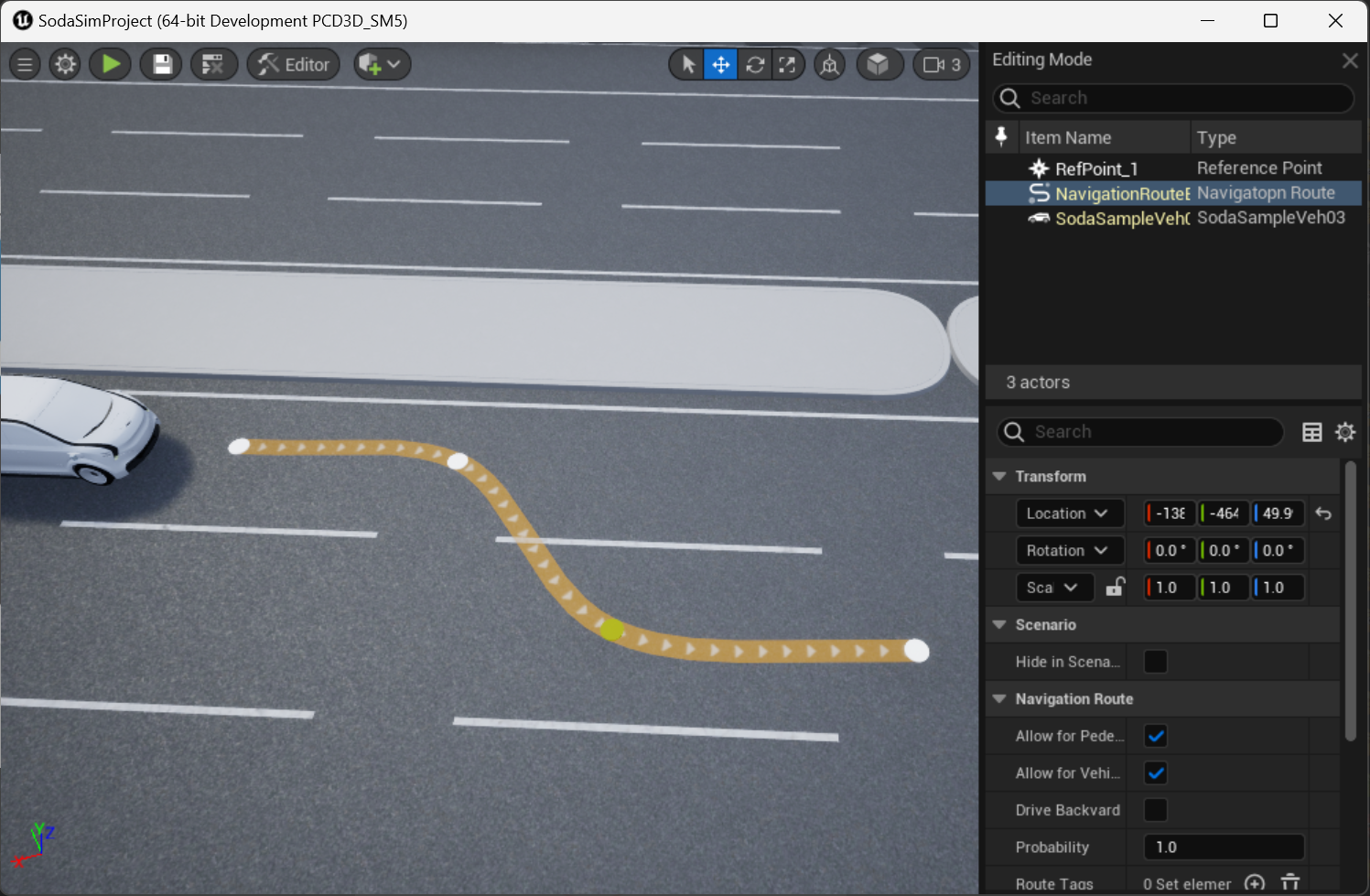5. Scenario Actors
An Scenario Actor refers to any element that can be situated on a map, including vehicles, cameras, or starting points. These entities are flexible with 3D transformations such as shifting, rotating, and resizing. Additionally, they can be created or removed based on scenario stipulations. Adjust their properties easily using the actor editor, accessible by clicking on the actor.
Different kinds of actors include:
Physical (vehicles, pedestrians, road signs)
Invisible (weather conditions, reference points)
Special (route planners, lap counters)
Every actor you can add it to the scenario in Editor Mode by dragging it from the Add Actor Menu:

5.1. SODA Vehicle
The SODA Vehicle is the primary simulated object in the SodaSim (also known as ego vehicle). Refer to the Editor Mode and Soda Vehicle API for comprehensive information.
This part of the guide is under development
5.3. Ghost Vehicle Actors
Ghost Vehicles, devoid of physics and collision, mimic traffic by moving along a pre-defined Navigation Route. Can be used for traffic imitation and/or for scenario actions / events.
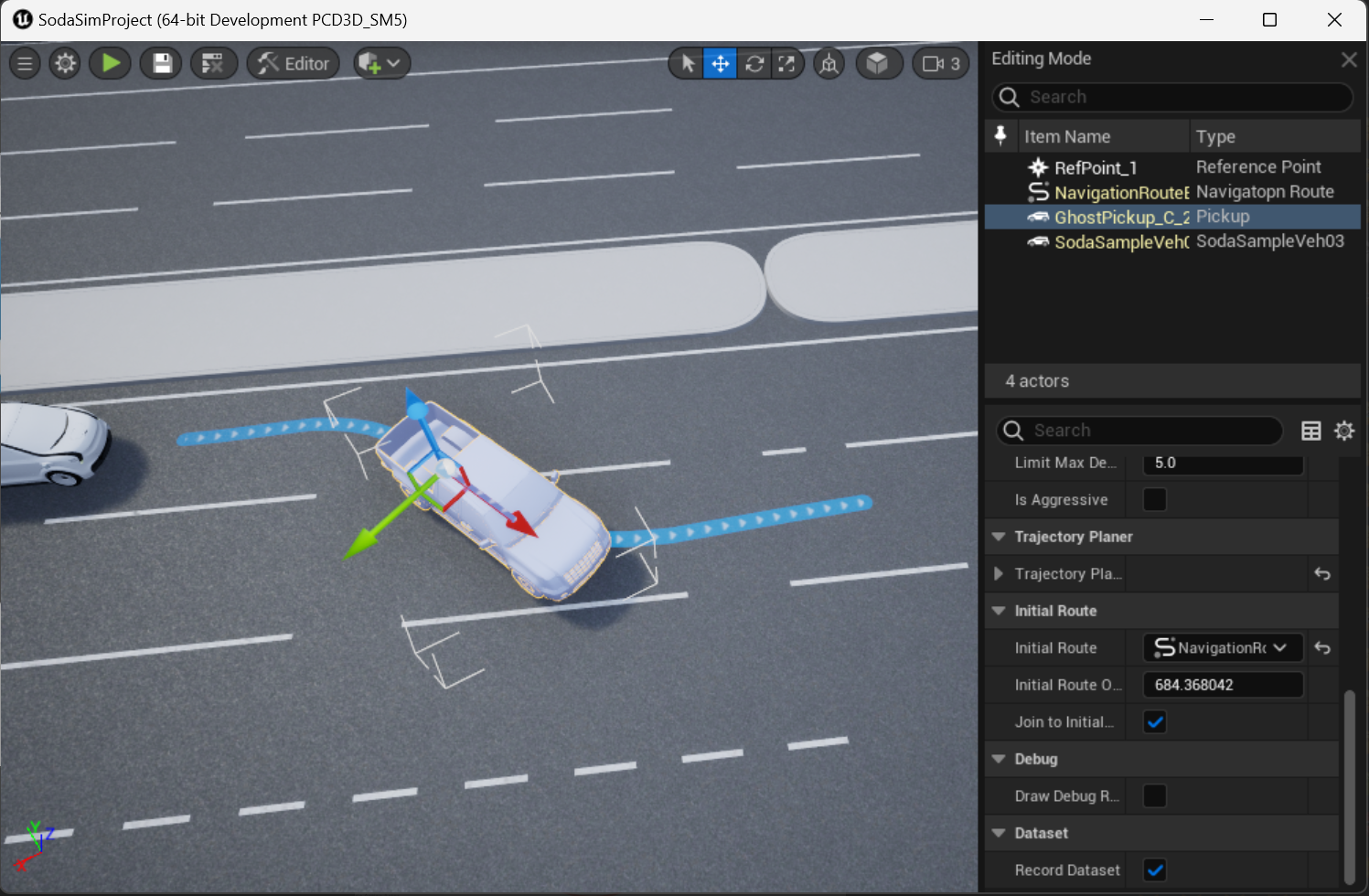
This part of the guide is under development
5.4. Ghost Pedestrian Actors
Pedestrians, used for scenario actions/events, move along a pre-defined Navigation Route
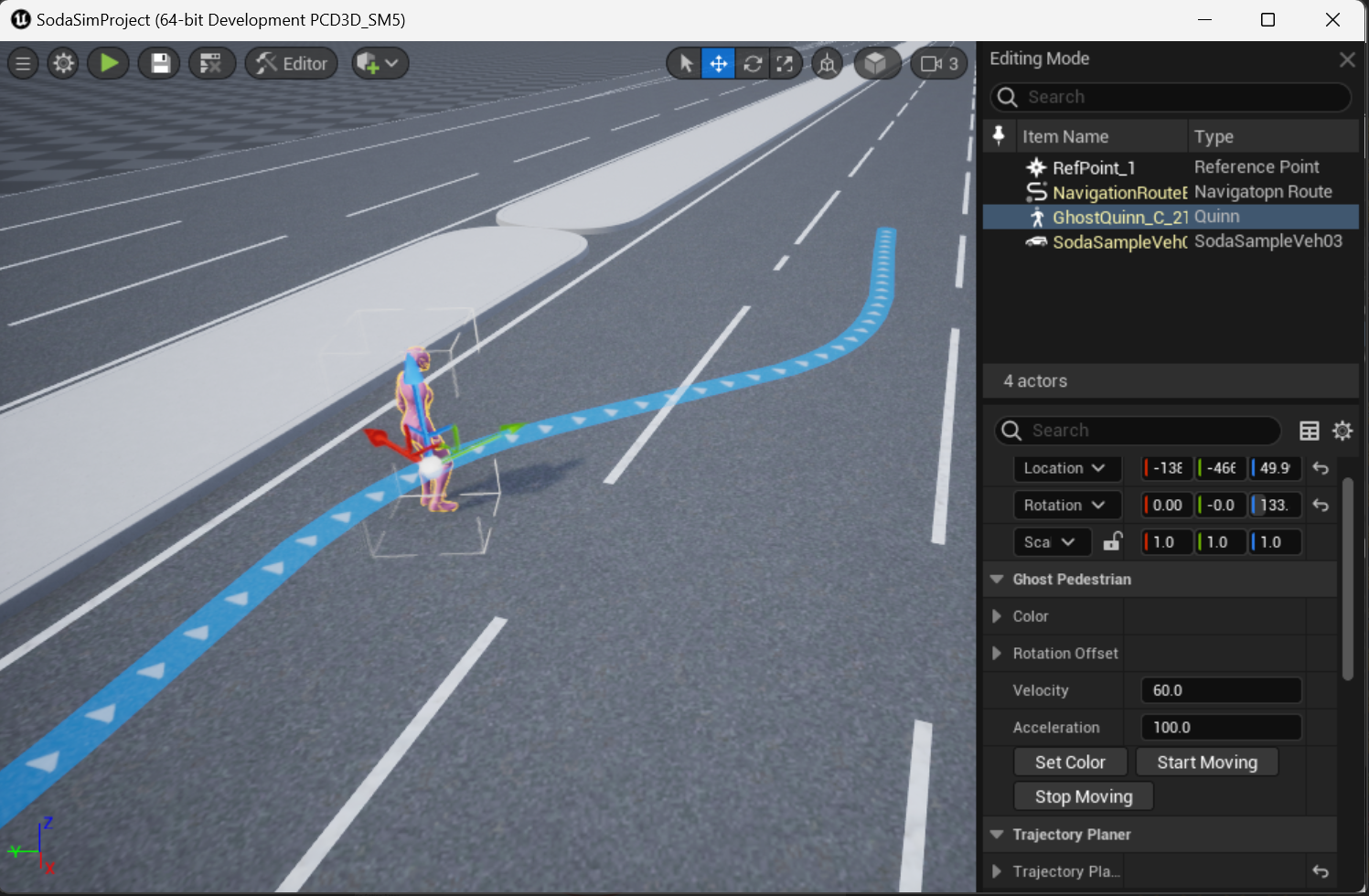
This part of the guide is under development
5.5. Scenario Action Actor
Scenario Action is an actor that implements a single scenario action.
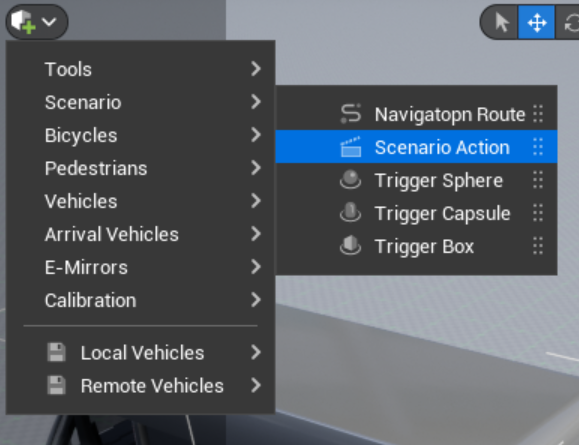
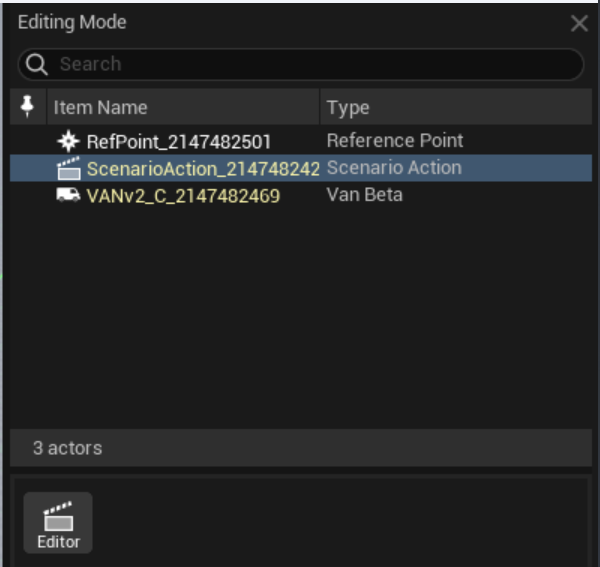
It utilizes a visual scenario programming language to create scenarios based on the Event → Action rule.
Event refers to any occurrence related to another actor, such as ‘position is reached’ or ‘distance to another vehicle becomes equal to N’. See sect. Scenario Action for the full list of available triggers. Event can be complex and include more than one single event (using logical statements).
Action signifies any method used by an actor in the scenario. Such as ‘switch to the left lane’, ‘turn off sensor N’, ‘set accelerator pedal to X’, ‘set the weather to conditions’ etc. Action can be complex and include more than one single action.
See an example of this visual scenario programming language in the figure below, where Event is ‘Scenario Begin’ and Action activates a component:
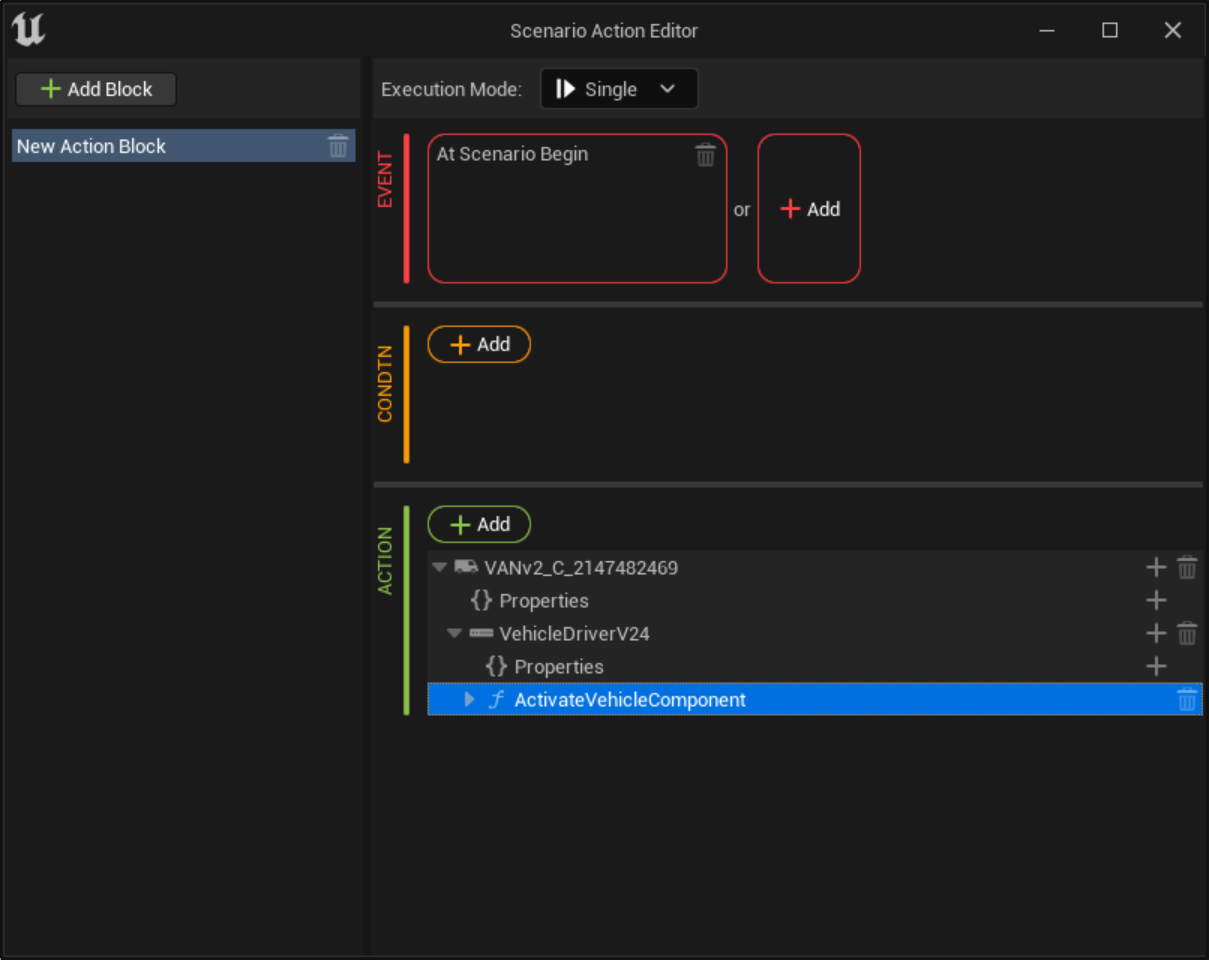
On the screenshot above Event is ‘Scenario Begin’, i.e. the rule will be activated right after Play Scenario button click. Action is a component VehicleDriverV24 activation. In other words, this rule prescribes driver imitator to be always active.
